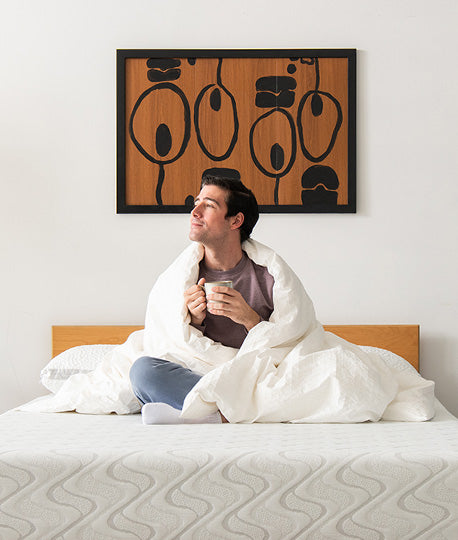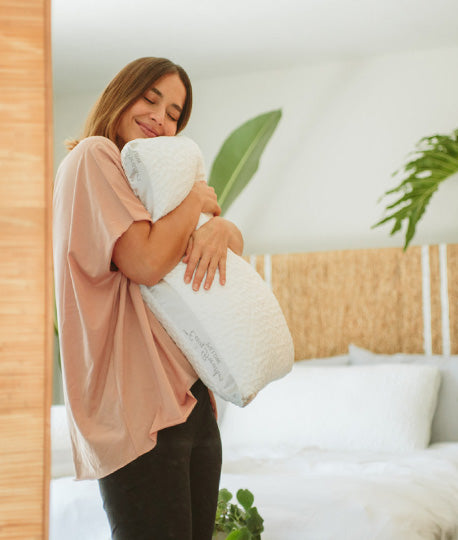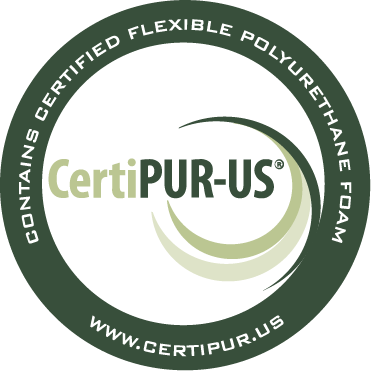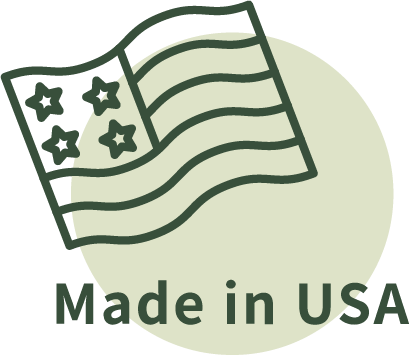Revealing the Mystery of Hypoallergenic Bedding
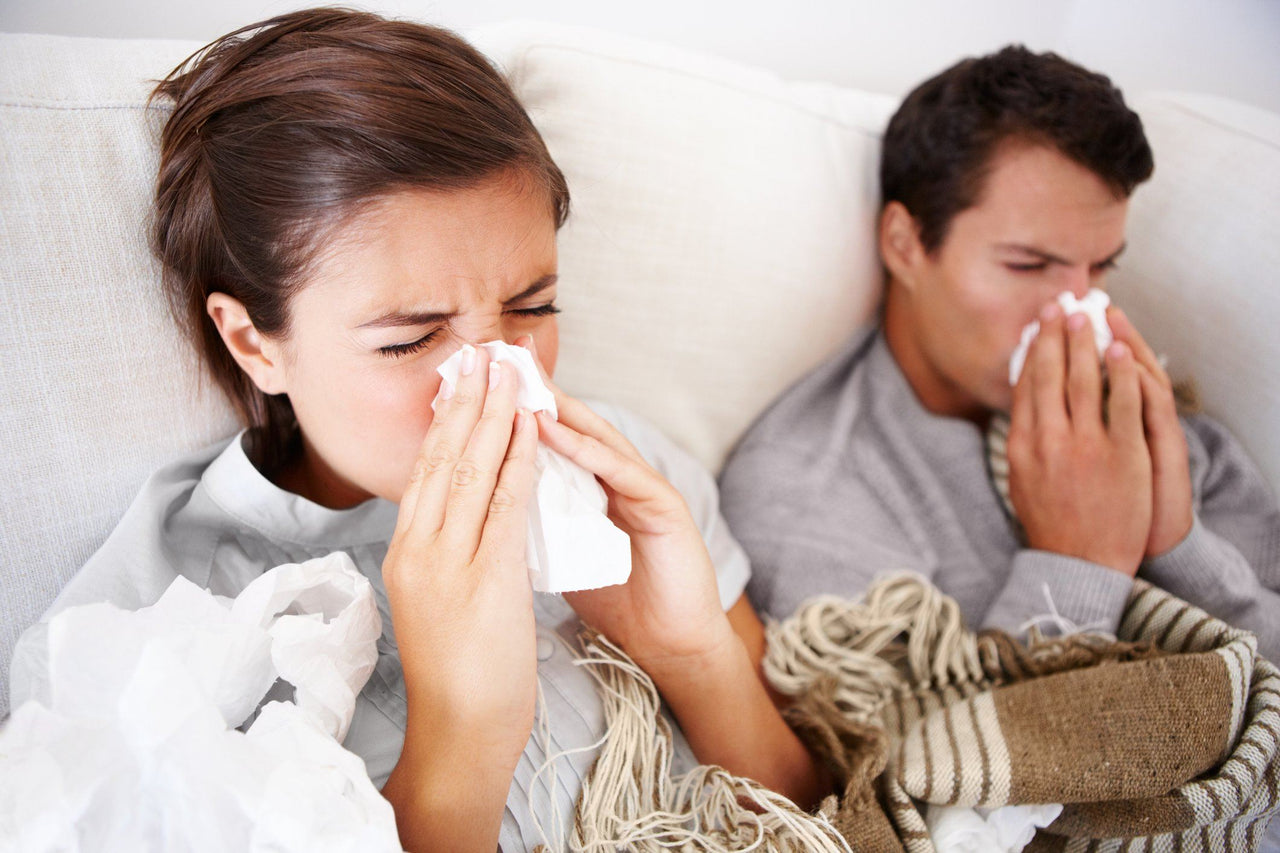

In the world of bedding, there are a lot of unique words and phrases that can translate into a better night's sleep — thread count, percale and flannel, memory foam and pillow-top. If you know what these things mean, you can construct an ideal sleeping environment. But it's not like sheets come with an instruction manual. One of the bedding buzzwords you may have heard a lot recently is hypoallergenic. Being hypoallergenic is a fundamental feature of bedding but, surprisingly, not many people know what it means.
Hypoallergenic, as a word, means anti-allergy. You may have seen anti-allergy bedding advertised as well, which means the same thing. Hypo is the opposite of hyper, meaning “very little” instead of “too much.” In theory, anything hypoallergenic should help you combat allergies. Therefore hypoallergenic bedding is what people with allergies should use.
But what, exactly, does it mean for bedding to be hypoallergenic? That’s what we are here to discuss.
Not All Hypoallergenic Bedding is the Same
The first thing you need to realize is that not all bedding means the same thing when it claims to be hypoallergenic. Helping you fight allergies is a pretty broad mandate, and there are several ways to go about this task.
For instance, does the bedding prevent allergens from getting near you, block allergens from getting into the pillow and mattress, or merely discourage new allergens from forming?
There are types of hypoallergenic bedding that do all of these things. But it's not always clear precisely what an advertised hypoallergenic item does in terms of helping you with allergies.
There are four different ways bedding can help resist allergens and allergy symptoms:
- Doesn't Trigger Allergies
- Blocks Dust Mites
- Doesn't Grow Mold
- Repels Allergens
We'll talk about each type and what they can do for you.
Bedding You Are Not Allergic To
The first way something can be hypoallergenic merely is not triggering any allergies. It might sound trivial, but when it comes to bedding, it can be pretty challenging to find something to which no one is allergic.
Latex bedding is out because many people are allergic to latex, though it's an example of many of the other hypoallergenic qualities.
There are people allergic to wool, to specific fiber blends, and chemicals from the fabric treatment process.
For not triggering allergies, the most reliable choice is organic 100% cotton bedding. However, there are other types of natural and synthetic materials (silk, bamboo, microfiber, etc.) that are also hypoallergenic in this way. Non-triggering bedding is also usually straightforward to wash clean if exposed to allergens like pollen or dust.
Bedding That Blocks Dust Mites
Dust mites are a part of both the bedding and allergy world. Dust mites are tiny creatures that enjoy eating the skin cells we shed. Both the skin and dust mite droppings become what we know of as regular house dust. Over time, dust mites enjoy making a home in our mattresses and pillows, where we leave a significant amount of dead skin. Icky? Yes. But also harmless and normal in every modern household.
Unfortunately, some people are extremely allergic to dust mites and wake up with swollen sinuses after sleeping surrounded by the microscopic creatures. Protective mattress covers and pillow covers made of a tight weave or impermeable backing make it impossible for dust mites to pass through. This barrier prevents them from being able to move into your mattresses and pillows, meaning only a small number of dust mites can be around your bed at any given time.
This protection is another type of hypoallergenic bedding. Many advertisements show pillows and mattress covers as hypoallergenic, and what they mean is the fabric is sufficient to prevent dust mite infestation in your bedding.
Bedding That Resists Mold
Mold is another major issue for allergies. Most people have at least a mild mold allergy, and the symptoms of spore exposure often mimic allergies even for people without a specific sensitivity. Mold also grows anywhere with moisture and porous material. Sometimes, a bed or pillow is the perfect place for mold to grow. Especially if the sleepers tend toward night sweats or the climate is humid.
Certain types of bedding like latex and silk are particularly resistant to problems like mold, mildew, and other microorganisms. This resistance is yet another critical aspect of hypoallergenic bedding but is one of the smallest concerns in the overall population. Mostly, only people who've faced a moldy pillow in the past are worried about preventing mold in the future with hypoallergenic pillows and covers.
Bedding That Repels Allergens
Finally, there's bedding that reduces the number of allergens with which you share a bed. While non-triggering sheets don't directly cause an allergic reaction, certain kinds of hypoallergenic bedding repel most allergen particles like pollen, dust mites, and mold spores. This type of bedding is more likely to be a synthetic material designed not to be particle-absorbent the same way cotton is.
Hypoallergenic sheets that repel allergens don't absorb other things. You will be better able to shake out and wash out allergens that drift into the bedroom than with more permeable fabrics. These hypoallergenic bedding items are often also advertised as stain-resistant for the same reasons.
Which Hypoallergenic Bedding is Right for You?
So which kind of hypoallergenic bedding do you need? Naturally, every type is useful in its own right, but most people are only concerned about one or two specific issues when it comes to fighting allergies.
Only people with a household mold problem (or with beds in damp places like the seaside or on boats) need to worry about fighting mold. But everyone benefits from keeping the dust mite buildup in your mattresses and pillows to a minimum.
If you have fabric allergies, your primary concern will be natural non-triggering bedding that doesn't leave you waking up with a rash. If you're sensitive to pollen and sinus irritants, you may want bedding that repels allergens and dust mites. Children and the elderly both benefit significantly from mite-resistant covers on pillows and mattresses, and from non-triggering sheets that you wash often.
If you want healthy sleep without any specific allergy worries, get hypoallergenic covers for your mattresses and pillows.
The right hypoallergenic bedding for you will depend on your unique allergy-related needs. And to know what you're buying, remember to look closely at the packaging and product description. Touting natural fibers usually means it is non-triggering. Being called a protector or cover means the purpose is to reduce build-up inside the mattresses and pillows. And everything else is often more clearly labeled.
Here at Nest Bedding, we specialize in finding the perfect bedding solutions for every person. Whether you like fluffy pillows or firm ones, have allergies or want a good night's sleep, contact us today! We're always ready to point a new deep sleeper in the right direction.
